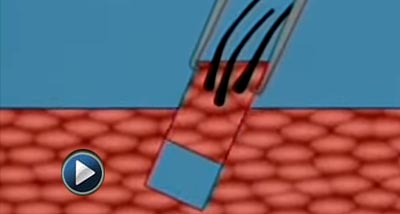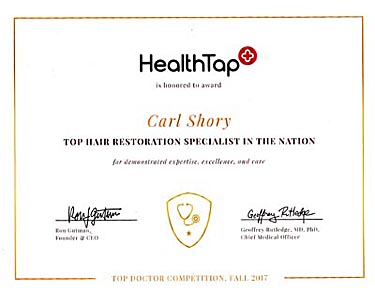
|


In 1985-86 Dr. Shory and his team were the first in the United States to employ full scalp coverage using follicular unit hair transplantation. This revolutionary technique was light-years ahead of the old standard hair transplant. No other clinic in the country employed this whole scalp FUT coverage until the early 1990's.
Dr. Shory continues to bring this kind of excellence to his work in the 21st century by performing the "FUT PLUS" technique. Rather than making a slit in the scalp and jamming a round graft into an elongated slit, a circle of bald scalp is removed and the graft is placed in a more physiologically correct position. In this way the hair grows out at the exact angle and direction of the surrounding hairs. In addition, bald scalp is actually removed and there is less scarring, dimpling and virtually no ingrown hairs. There is none of the "bouquet" effect where multiple hairs grow from a single hole, and the hairs grow smooth and straight.
The finished results can be washed, cut, combed, styled and look totally natural. In addition the procedure has been so refined that it is virtually painless, requiring no sedation and no bandages.
Because of the small size of the grafts, they can be placed within existing thin hair to thicken it, or, if so desired, the original hairline can be re-established.
The procedure is performed on an outpatient basis with the patient fully awake - sitting upright watching a favorite video, and it requires only two to five hours to complete. Afterwards the hair is styled to look no different from when the patient arrived at the clinic, and the patient can usually return to work immediately.
In addition, I have given varying doses of oral steroids pre-operatively to prevent edema. A dose of about 60mg of prednisone or 8mg of dexamethasone seems to work best. Using less than this is much less effective while using more only increases side effects. If the patient is instructed to apply an ice pack as much as possible for the first 6 hours post-operatively, the incidence of forehead edema is reduced to less than 5%.


![]()

Better Anesthesia In fact, the pain was subjectively reduced by at least 70% but post operatively he had very significant edema at his forehead and eyebrows for 3 days.. What happened was that the additional sodium drew water out of the capillaries by osmosis, so I tried another approach. This time I started with 50 ml of 1% lidocaine without epinephrine and added 0.5 ml of 1:1,000 epinephrine immediately prior to surgery. This worked like a charm. The pH was very close to normal body pH, the epinephrine did not break down for several hours, the pain was reduced 70-80%, and virtually no edema resulted. |
